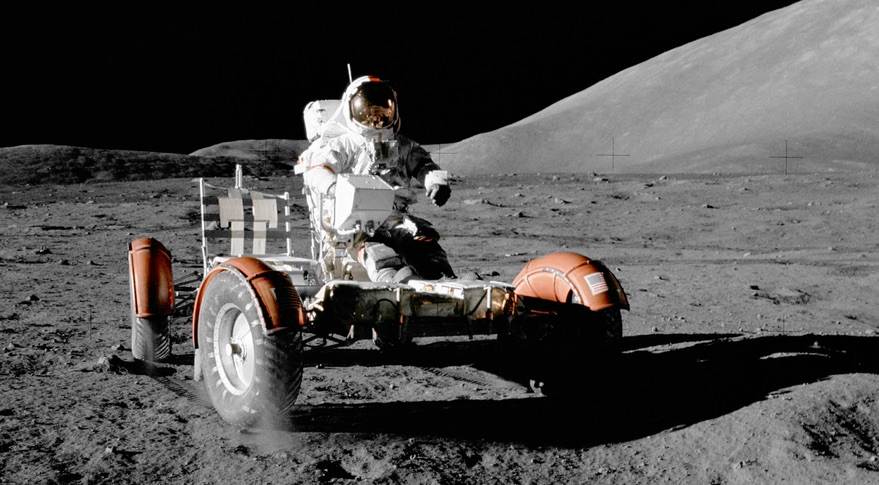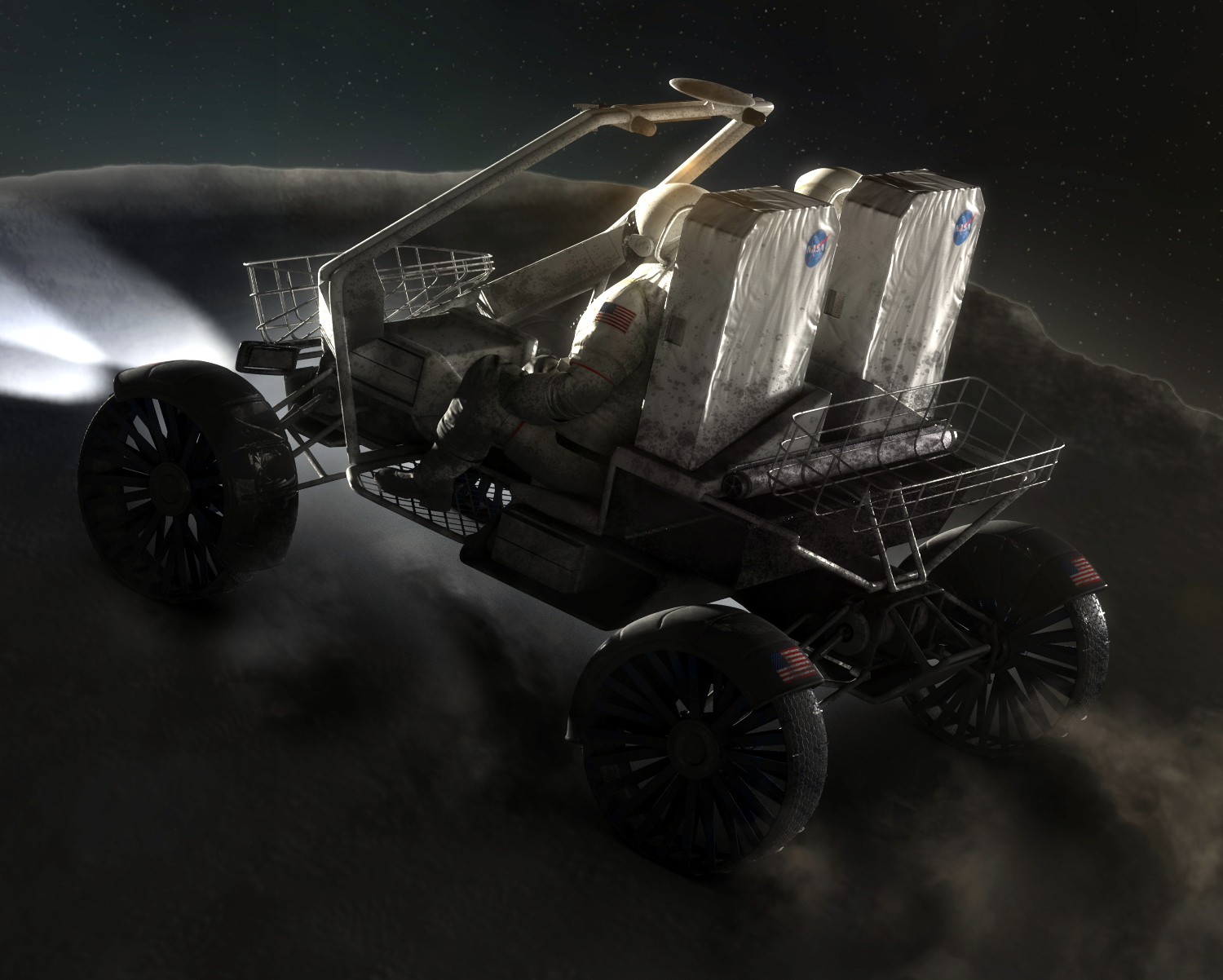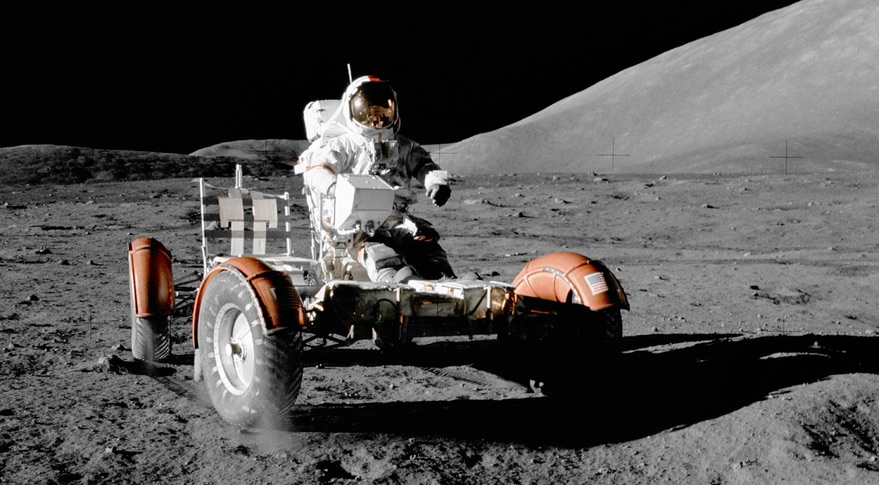
Core Mission Elements Of Artemis No One Is Talking About
It has been around 50 years since the last time a human stepped foot on the Moon. NASA has been planning on changing this for quite a while with Artemis. Artemis is a mission working to not only return humans to the Moon but set up a more permanent presence. However, in order to complete such a task, the agency is working on a long list of necessary mission elements.
Some of the core mission elements for Artemis are more obscure and not often talked about in detail. Some of these important elements include the Lunar Terrain Vehicle, Lunanet, Habitable Mobility Platform, The Foundation Surface Habitat, and more. All of which work together to provide not only a safe environment for astronauts but one they can consistently live and work efficiently in.
During the Apollo missions, time on the surface of the Moon was very limited. Artemis on the other hand is planning on setting up a more permanent base and having humans working on the surface consistently. This is a dangerous mission that requires a lot of infrastructure and equipment in order for it to be successful. In addition, this mission is responsible for helping provide experience for future human missions to Mars and beyond.
What Are Core Mission Elements?

Just safely bringing humans to the surface of the Moon is an incredible achievement. However, keeping them there and providing them with everything they need including shelter, power, equipment, communication, and much more, becomes an even greater challenge. In order to achieve such an ambitious goal, NASA has created a list of core mission elements, among other things, that are necessary for successful missions. Some of these core mission elements highlight obvious and often talked about technology including the SLS rocket itself, Orion crew module, Exploration Ground Systems, and more. All of which are key components to each future Artemis mission. However, I want to highlight some of the additional core mission elements that are still very important to future missions. NASA defines these core mission elements as the primary components under development or in early formulation for Artemis missions at the Moon. These are considered a snapshot and not fully representative of every system required for human-robotic lunar exploration. In reality, there will be hundreds of different mission elements working towards the Artemis program and missions.
Unique Core Mission Elements

Lunar Terrain Vehicle – The first piece of technology that NASA considers a core mission element is a rover for the Moon. The Lunar Terrain Vehicle or LTV is the surface transportation system for the 2024 human lunar return. This vehicle has many features including limited power generation, energy storage, avionics, and communication. All of which significantly extend the range of crew excursions, enabling more science, resource prospecting, and exploration. This lunar vehicle can fit two astronauts, positioned at the very front. It includes a payload storage volume and teleoperated science operations. This means it can be operated to perform science operations during the non-crewed lunar periods and transport small deployable assets to desirable locations. It features an open hab design with a partial windshield in front of the two astronauts.
Lunanet – The next core mission element that is very unique has to do more with technology. Lunanet is envisioned as a framework of standards, protocols, and interfaces to support a scalable communication and navigation network for NASA and other partners in cis-lunar space. Lunanet will provide the basis for seamless robotic, science, and human operations by providing networked communication, PNT, science, and alert services. This technology is architectured to accommodate, NASA, commercial, and international partner assets. It’s inclusive of lunar relay, lunar surface, Earth assets, and could even be used for future human missions to Mars. In addition, the Lunanet architecture is scalable to meet immediate mission needs at the Lunar south pole and Lunar far side and to provide global Lunar coverage as demand grows. All of which would be very beneficial to the operation, safety, and efficiency of astronauts on the surface of the Moon.
Habitable Mobility Platform – Another unique aspect of NASA’s core mission elements includes a much larger Lunar vehicle. The Habitable Mobility Platform or HMP, will vastly expand the range of possible excursions and enable new science, resource prospecting, exploration, and more. In simpler terms, the HMP is a very large and enclosed rover that astronauts could live, work, and use. NASA provides an image showing a very large vehicle that uses 12 wheels to move around the Lunar surface. This same HMP will also be used for analogs of Martian surface activities on the Moon to reduce risk and to optimize operations concepts. NASA points out this Lunar HMP will be greatly leveraged from the Mars HMP. In addition to its large size, the HMP features a lot of habitable volume, avionics, communication, power generation and storage, and even EVA suit accommodation.
The Foundation Surface Habitat – The next aspect of NASA’s core mission elements features a long-term outpost for the crew. The Foundation Surface Habitat or FSH will provide a continuous, long-term outpost for a crew to visit up to 60 days. This habitat is planned to be delivered not by NASA, but by commercial and international partners. Once established, it will provide the support necessary for extended human missions and occupation on the Moon. It will feature habitable and stowage volume, along with ECLSS. ECLSS is the Environmental Control and Life Support System which provides clean air and water. In addition to this, the habitat will provide power pass-through for other elements, thermal control, and powerful communication with not only Gateway but surface elements as well. It will also support external robotics and payloads, along with EVA suit compatibility or airlock.
Lunar Surface Power – The final feature of NASA’s core mission elements I wanted to highlight is a possible power source. Specifically, to support sustainable operations through the lunar night and empower human exploration, NASA is developing a modular nuclear fission power source up to 10 kW. Near-team demonstration on the lunar surface can provide reliable power to human landers, habitats, and ISRU systems continuously through eclipse periods and provide a proving ground to extend the capability as a power source that will enable Mars exploration. In terms of functions of the power source, the surface architecture depends on power capability delivered with landers. The power level is depended on the propellant type and the transfer strategy. NASA also makes it very clear their intent to use this same type of technology for future missions to Mars. While it still has a long way to go, It could provide consistent power in times of need on the lunar surface and more.
Conclusion
Before humans can return to the Moon, there is a lot of work that needs to be done. NASA is hard at work developing and testing key components such as the Space Launch System and much more. However, in order for humans to not only return to the Moon but set up a more permanent presence, a lot more equipment and planning is needed. This is why NASA has additional core mission elements including a Lunar Terrain Vehicle, Lunanet, Habitable Mobility Platform, Foundation Surface Habitat, and more. All of which work together to ensure that astronauts on the surface are not only safe but capable of staying on the surface for a longer period of time and being more efficient. With the initial Artemis mission planned for 2024, we will have to wait and see if NASA can be ready in time, and what future impact these specific mission elements will have.
